
Concept explainers
(1)
Interpretation:
The most acidic hydrogens in the given compounds are to be indicated.
Concept introduction:
The substances that produce hydrogen ions (
According to the definition of Bronsted and Lowry, acids are the substances that donate protons whereas bases are the substances that accept protons.
(1)
Answer to Problem 22.60SP
The most acidic hydrogens in the given compounds are shown in Figure 1.
Explanation of Solution
In a molecule, different types of protons are present. However, when acting as acids, only the most acidic proton participates in the acid-base reaction. The protons of
Acidic hydrogen is defined as that hydrogen which is attached to more electronegative atoms like oxygen and fluorine. The compound (f) does not contain any acidic hydrogen atom in the given compounds.
The most acidic hydrogens in the given compounds are shown below.
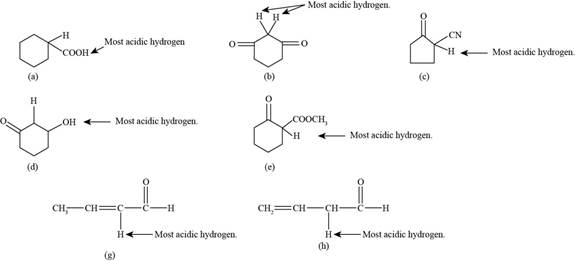
Figure 1
(2)
Interpretation:
The structures of important resonance contributors of the anions of the given compounds are to be drawn.
Concept introduction:
The delocalization of electrons due to presence of lone pair and double bond is called resonating structure. The structure is more stable if the resonating structures are more.
(2)
Answer to Problem 22.60SP
The structures of important resonance contributors of the anions of the given compounds are shown below.
Explanation of Solution
The formation of carbanion occurs when acidic hydrogen is removed from a compound. The important resonance contributors of the anions that results from the removal of most acidic hydrogen are shown below.
(a)
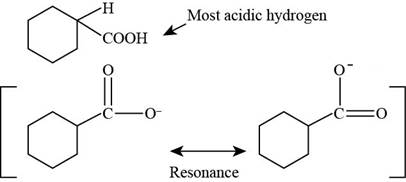
Figure 2
(b)
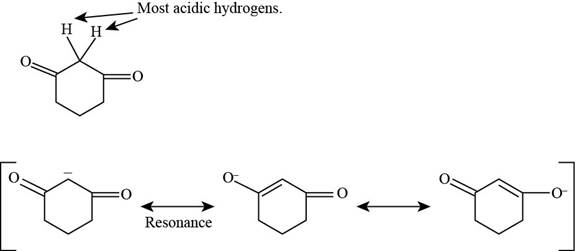
Figure 3
(c)
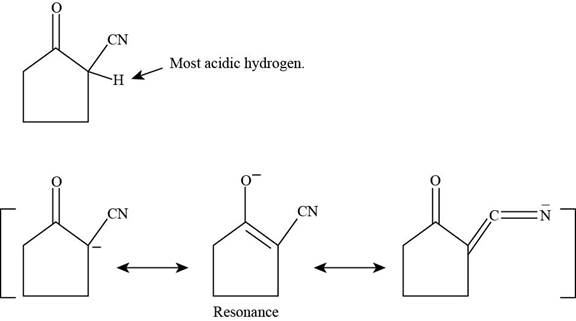
Figure 4
(d)
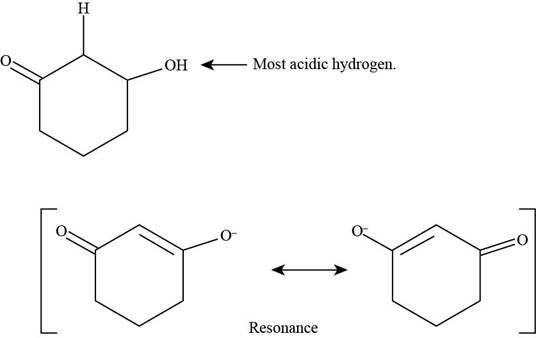
Figure 5
(e)
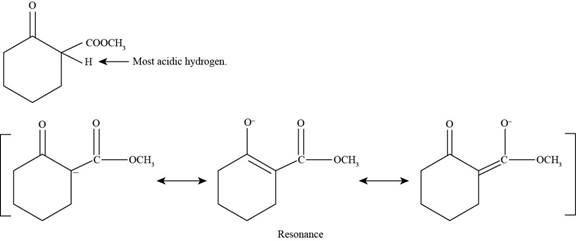
Figure 6
(f)
The given compound is shown below.

Figure 7
The given compound does not contain any acidic hydrogen atom. Therefore, it does not show resonance structures.
(g)
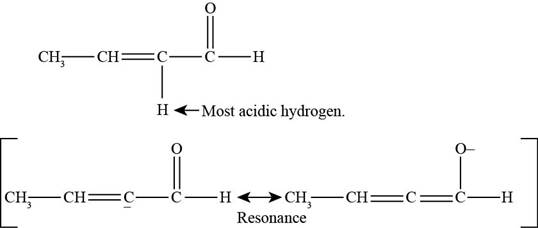
Figure 8
(h)

Figure 9
Want to see more full solutions like this?
Chapter 22 Solutions
Organic Chemistry Plus Masteringchemistry With Pearson Etext, Global Edition
- 2. Provide reagents/conditions to accomplish the following syntheses. More than one step is required in some cases. a. CH3arrow_forwardIdentify and provide an explanation that distinguishes a qualitative and quantitative chemical analysis. Provide examples.arrow_forwardIdentify and provide an explanation of the operational principles behind a Atomic Absorption Spectrometer (AAS). List the steps involved.arrow_forward
- Instructions: Complete the questions in the space provided. Show all your work 1. You are trying to determine the rate law expression for a reaction that you are completing at 25°C. You measure the initial reaction rate and the starting concentrations of the reactions for 4 trials. BrO³¯ (aq) + 5Br¯ (aq) + 6H* (aq) → 3Br₂ (l) + 3H2O (l) Initial rate Trial [BrO3] [H*] [Br] (mol/L) (mol/L) | (mol/L) (mol/L.s) 1 0.10 0.10 0.10 8.0 2 0.20 0.10 0.10 16 3 0.10 0.20 0.10 16 4 0.10 0.10 0.20 32 a. Based on the above data what is the rate law expression? b. Solve for the value of k (make sure to include proper units) 2. The proposed reaction mechanism is as follows: i. ii. BrО¸¯ (aq) + H+ (aq) → HBrO3 (aq) HBrO³ (aq) + H* (aq) → H₂BrO3* (aq) iii. H₂BrO³* (aq) + Br¯ (aq) → Br₂O₂ (aq) + H2O (l) [Fast] [Medium] [Slow] iv. Br₂O₂ (aq) + 4H*(aq) + 4Br(aq) → 3Br₂ (l) + H2O (l) [Fast] Evaluate the validity of this proposed reaction. Justify your answer.arrow_forwardе. Д CH3 D*, D20arrow_forwardC. NaOMe, Br Brarrow_forward
- Please predict the products for each of the following reactions: 1.03 2. H₂O NaNH, 1. n-BuLi 2. Mel A H₂ 10 9 0 H2SO4, H₂O HgSO4 Pd or Pt (catalyst) B 9 2 n-BuLi ♡ D2 (deuterium) Lindlar's Catalyst 1. NaNH2 2. EtBr Na, ND3 (deuterium) 2. H₂O2, NaOH 1. (Sia)2BH с Darrow_forwardin the scope of ontario SCH4U grade 12 course, please show ALL workarrow_forwardIs the chemical reaction CuCl42-(green) + 4H2O <==> Cu(H2O)42+(blue) + 4Cl- exothermic or endothermic?arrow_forward
 Organic Chemistry: A Guided InquiryChemistryISBN:9780618974122Author:Andrei StraumanisPublisher:Cengage Learning
Organic Chemistry: A Guided InquiryChemistryISBN:9780618974122Author:Andrei StraumanisPublisher:Cengage Learning
